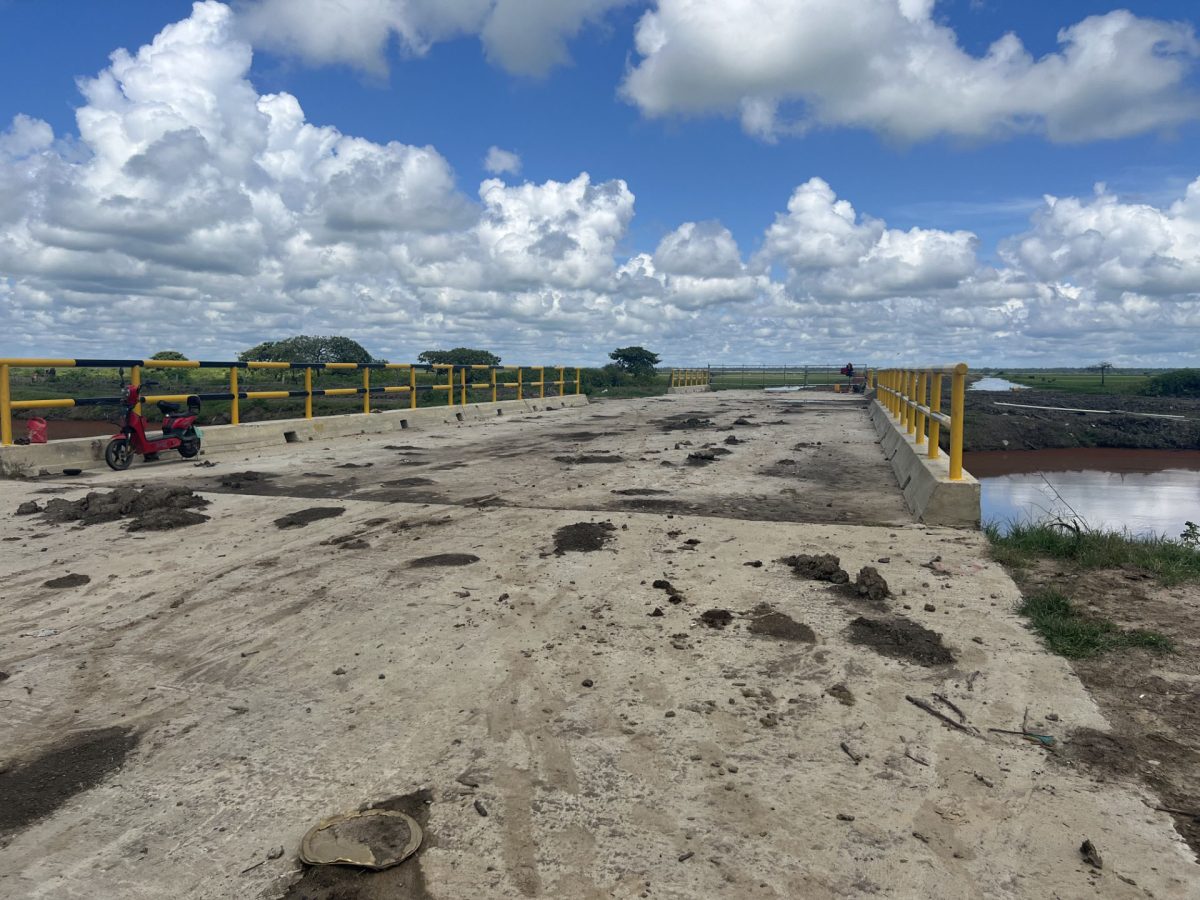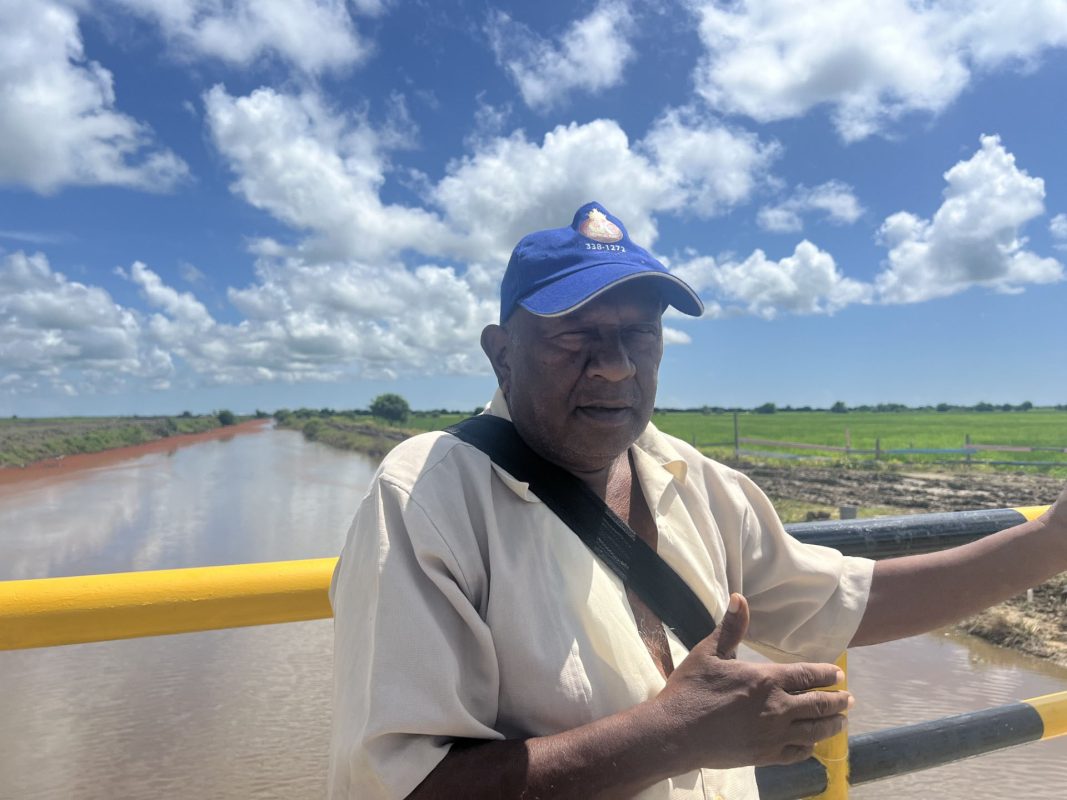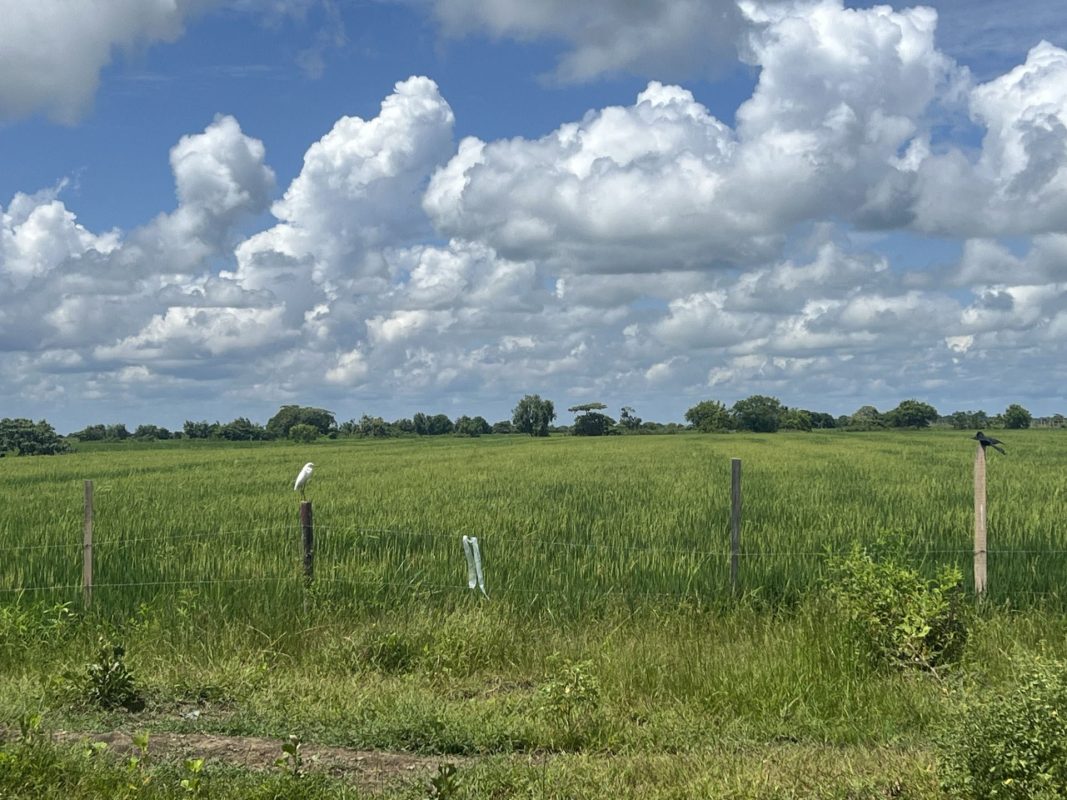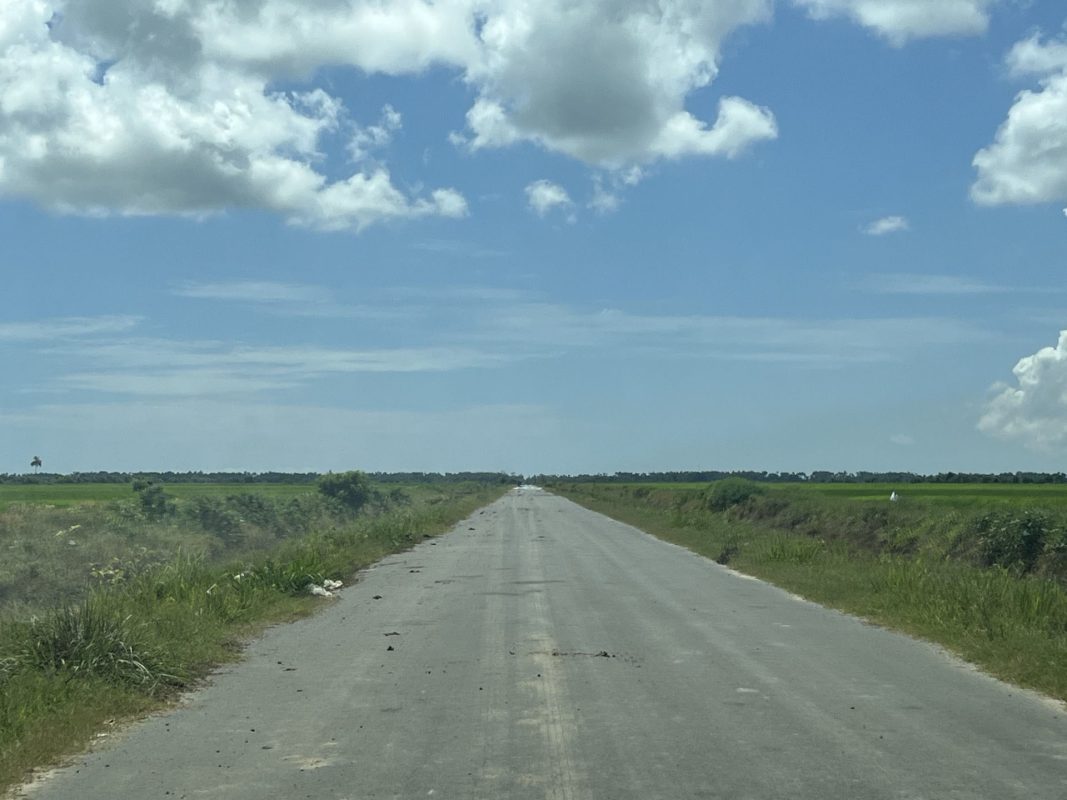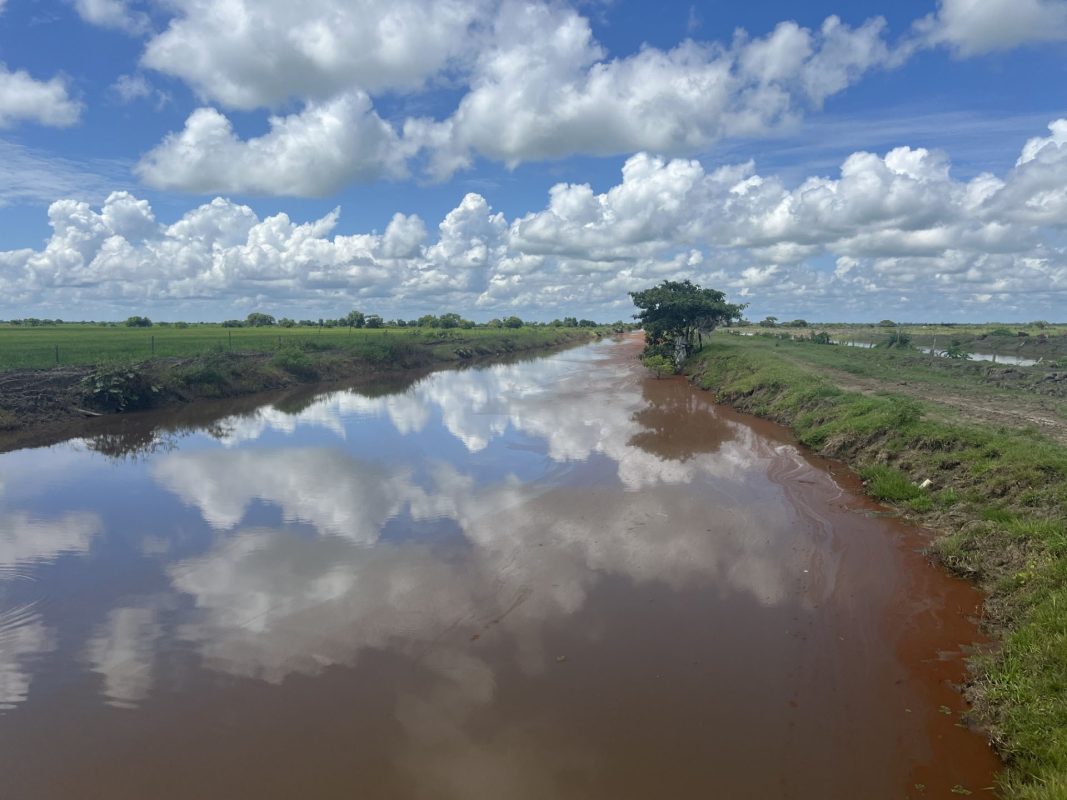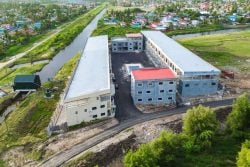Upper Corentyne farmers are enthusiastic about the clearing of canals and other major infrastructure, which will also see the building of a drainage system similar to the one at Hope, East Coast Demerara. However, they would like to see better monitoring and maintenance of all the work being carried out.
One such is rice farmer Ramgolam Singh, who has operated in the Corentyne area for several decades. In an exclusive interview with the Stabroek News, he said that due to the government’s construction of a farm-to-market road in Number 58 Village, Corentyne, farmers are able to access their rice fields and pastures even when there is heavy rainfall. The 6.4 kilometres road was completed with asphaltic concrete back in 2022 and has eased farmers’ access to their fields. Previously they had to battle mud dams or await decent weather to get into their fields. Singh pointed out to this publication that over 300 rice farmers and 500 cattle farmers have benefited from the road. A drive along the road reveals over 350 acres of rice land on either side.
Last year, the construction of a massive heavy-duty bridge was completed, but it is yet to be commissioned. It interlinks the farm-to-market road with the cattle pastures allowing cattle farmers easier access to the location. Meanwhile, the farm-to-market road is expected to be continued beyond the bridge heading to the Canje Creek area where more land will be open up for agriculture.
Clearing
According to Singh, to date, the government has cleared several major canals heading down to the Canje Creek some of which drain the cattle pastures between Number 52 and Number 56 villages. “It was recently rehabilitated by the government of Guyana in the Hope-like canal project which will be interlinking… They are doing several canals like this, when you go down at the back there they are doing it right across,” Singh said.
He added that this has benefited farmers tremendously as it assists to quickly drain the surrounding fields and pastures whenever there is heavy rainfall. “When you go, machine working right across, around the clock,” he added.
Singh, who is often part of the consultations between the government and farmers for such projects, said that there are plans to “build a multimillion dollar dam at the back so that the Canje water cannot come in and affect the rice cultivation, the cattle farmer… So when the Canje Creek overflow the water can’t come in here and affect all of us.”
According to him, at the location there are approximately 12,000 acres of cattle pasture, “so when them do this work now … this project will benefit all those cattle farmers that get over 5,000 cattle in all. So this is a multibillion dollar project the government has embarked on, the Hope like canal. And they will establish concrete culverts in each area so when they ready to drain, they drain it out and keep back some so the cattle can still get water. “If you notice the cattle there and people fishing, everyday about 15 to 20 people come and do fishing here.”
According to the fisherfolk who were present at the location, the farm-to-market road has assisted them tremendously in accessing the area. “This thing good, watch what time now and we going out back. We come in and catch and done going out. We done early every day cause we just ride in quick,” one fisherman stated.
Meanwhile, Singh said that with the continuation of the road, “this will bring in approximately 40,000 acres on the southern side of the 52 canal, which will be the main drainage canal and then you have Kokerite Savannah and do the same at the back of Black Bush and over the Black Bush trench them doing another one to go up to Albion Estate.”
“The main purpose of this project is to drain the area, so when everything come together if rain fall hard we can get good drainage in 24 hours… When is flood and Canje flow through the system the whole place does flood and bad, we does lose a lot, the cattle farmers animals does dead, so this will help us a lot now.”
Singh said that in all his years while he was hopeful for a solution to the flood issues on the Corentyne, he never thought he would be able to see such a comprehensive plan come together where thousands will benefit. “When the project is completed it will drain the area in 24 hours, the rice area, the cattle area, the scheme area, the housing area, all go benefit,” Singh stressed.
